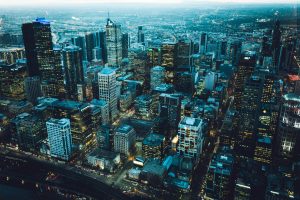 Glass panels have become a symbol of transparency and openness, conveying a sense of accessibility and accountability to the public. However, the use of glass in political buildings also raises important security concerns, particularly in an era where threats to public safety are increasingly unpredictable. This article explores the delicate balance between aesthetics and security in the incorporation of glass panels in political structures, and how architects and security experts navigate these challenges.
Glass panels have become a symbol of transparency and openness, conveying a sense of accessibility and accountability to the public. However, the use of glass in political buildings also raises important security concerns, particularly in an era where threats to public safety are increasingly unpredictable. This article explores the delicate balance between aesthetics and security in the incorporation of glass panels in political structures, and how architects and security experts navigate these challenges.
Glass panels are often used in political buildings because they make the space feel open and connected to the public. They allow natural light to flood into spaces, creating inviting and transparent environments that symbolize democratic ideals. Glass panels on these buildings would need cleaning and must be free from scratch fix on glass. The use of glass in political architecture is often intended to reflect the principles of transparency and openness that are fundamental to democratic governance.
Security Challenges
Despite their aesthetic appeal, glass panels pose significant security challenges in political buildings. Glass is inherently more vulnerable to breakage than solid materials like concrete or steel, making it a potential weak point in the building’s security. In the event of an attack, whether from a physical assault or an explosion, glass can shatter, causing injury to occupants and compromising the building’s integrity.
To mitigate these risks, architects and security experts must employ a range of strategies. Laminated glass is used because it stays together when broken, making it safer by preventing sharp pieces from flying around. Bullet-resistant glass is another option, offering protection against gunfire while still maintaining the transparency and aesthetic appeal of regular glass.
Technological Innovations
New technologies have helped make glass panels in political buildings safer. Smart glass technologies, for example, can adjust their transparency in response to security threats, turning opaque to shield the interior from external view during a lockdown. Additionally, glass can be treated with coatings that strengthen its resistance to impacts and explosions.
Balancing Act
The challenge for architects and security experts lies in finding the right balance between the aesthetic and symbolic value of glass and the imperative of ensuring the safety of the building’s occupants. This requires a holistic approach to security, integrating architectural design, advanced materials, and technology to create environments that are both welcoming and secure.
One example of this balance in action is the new U.S. Embassy in London, which features a transparent, glass cube design. The building employs several security measures, including blast-resistant glass and a surrounding pond that serves as a natural barrier. The design manages to maintain a sense of openness and transparency while ensuring the safety of embassy staff and visitors.
The Future of Glass in Political Architecture
As threats to public safety evolve, so too will the approaches to incorporating glass into political buildings. Architects and security experts will need to continue collaborating closely to develop innovative solutions that meet both aesthetic and security needs. The future of glass in political architecture will likely see further integration of technology, with smart glass and other innovations playing a central role in creating safe and transparent environments.
Using glass in political buildings has both pros and cons. Glass stands for transparency and openness, but it also needs good security. With modern materials, technology, and smart design, architects and security experts can make buildings that are both nice to look at and safe. As security risks change, the use of glass in these buildings will keep changing too, to keep a balance between looking good and being safe.
